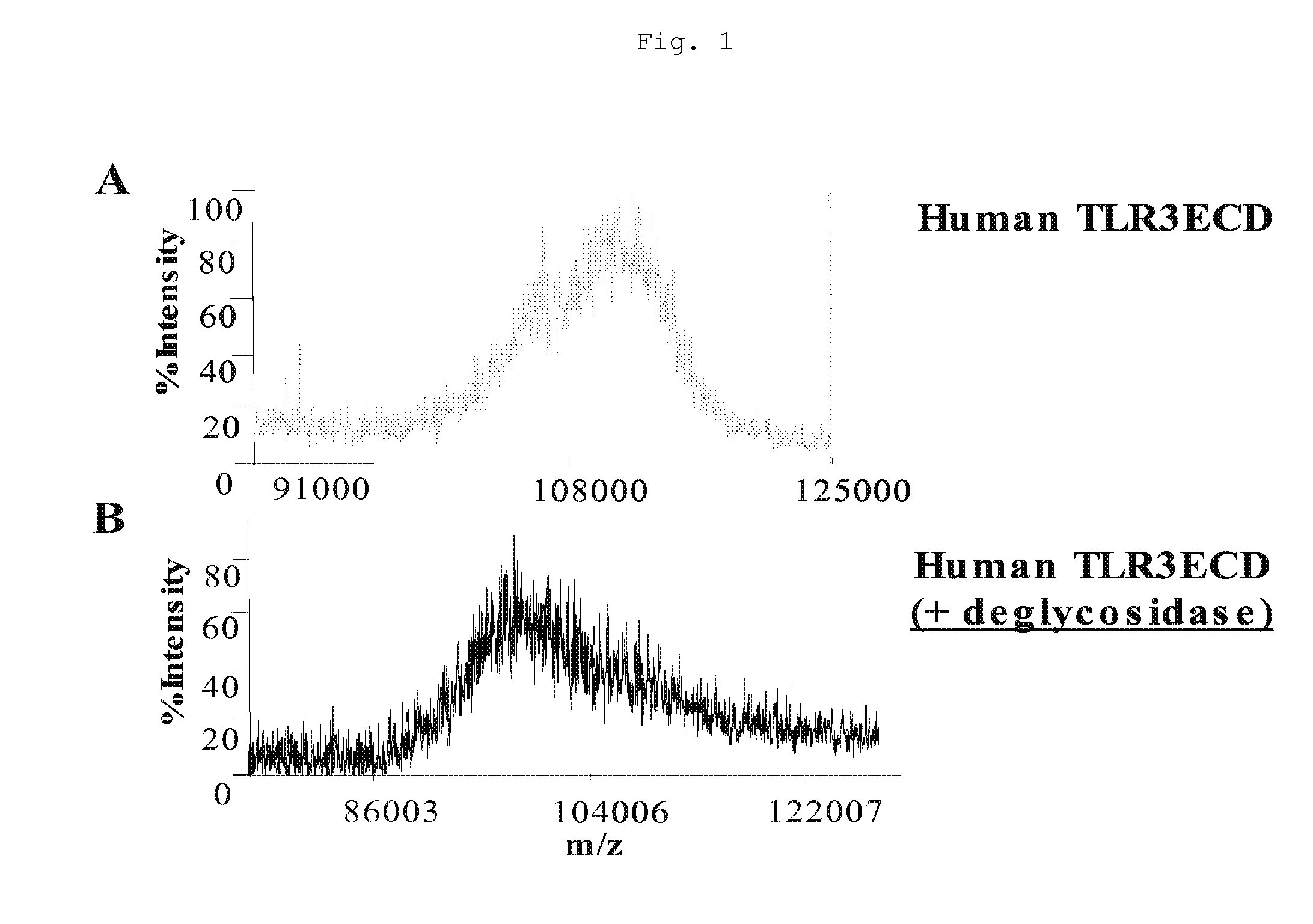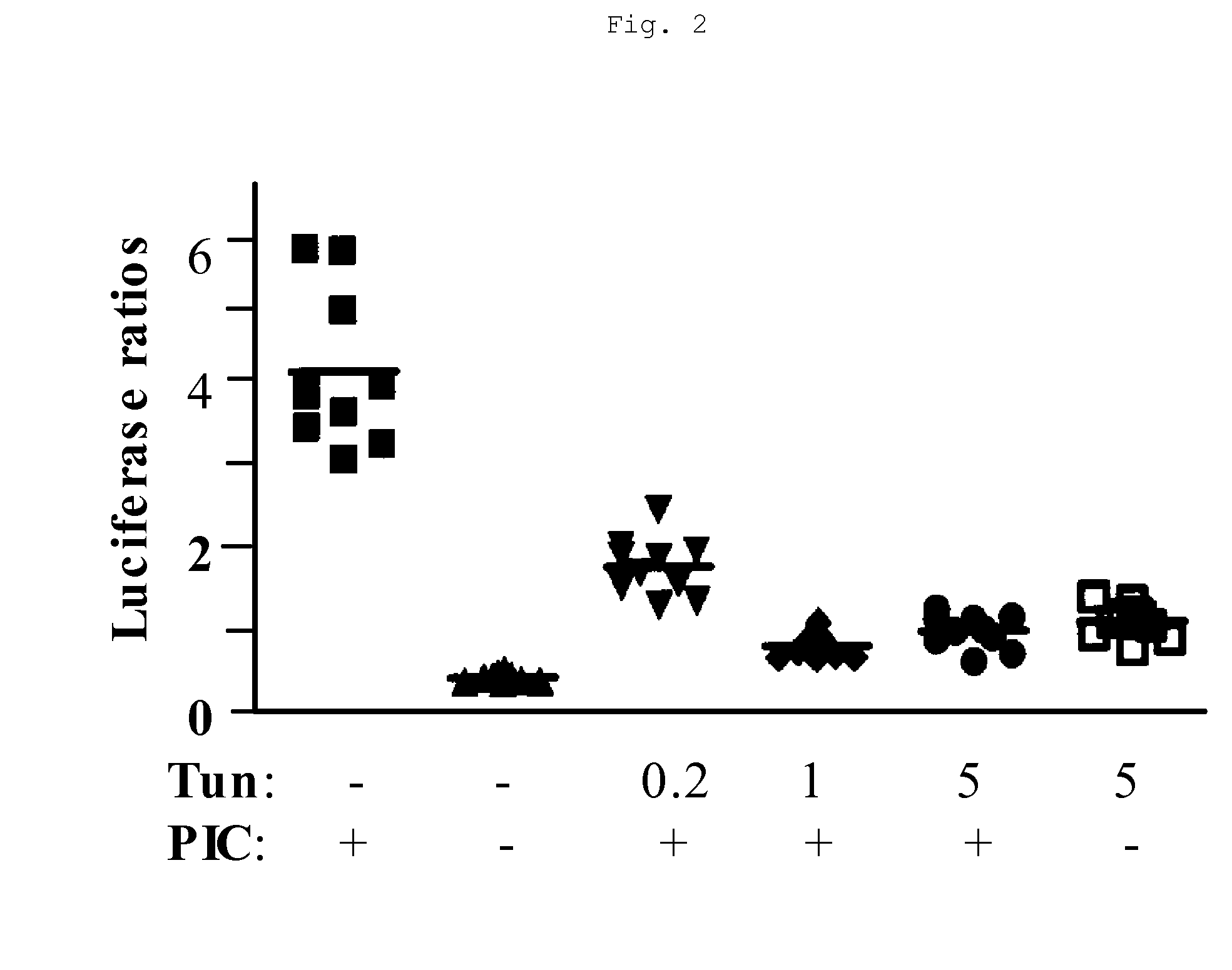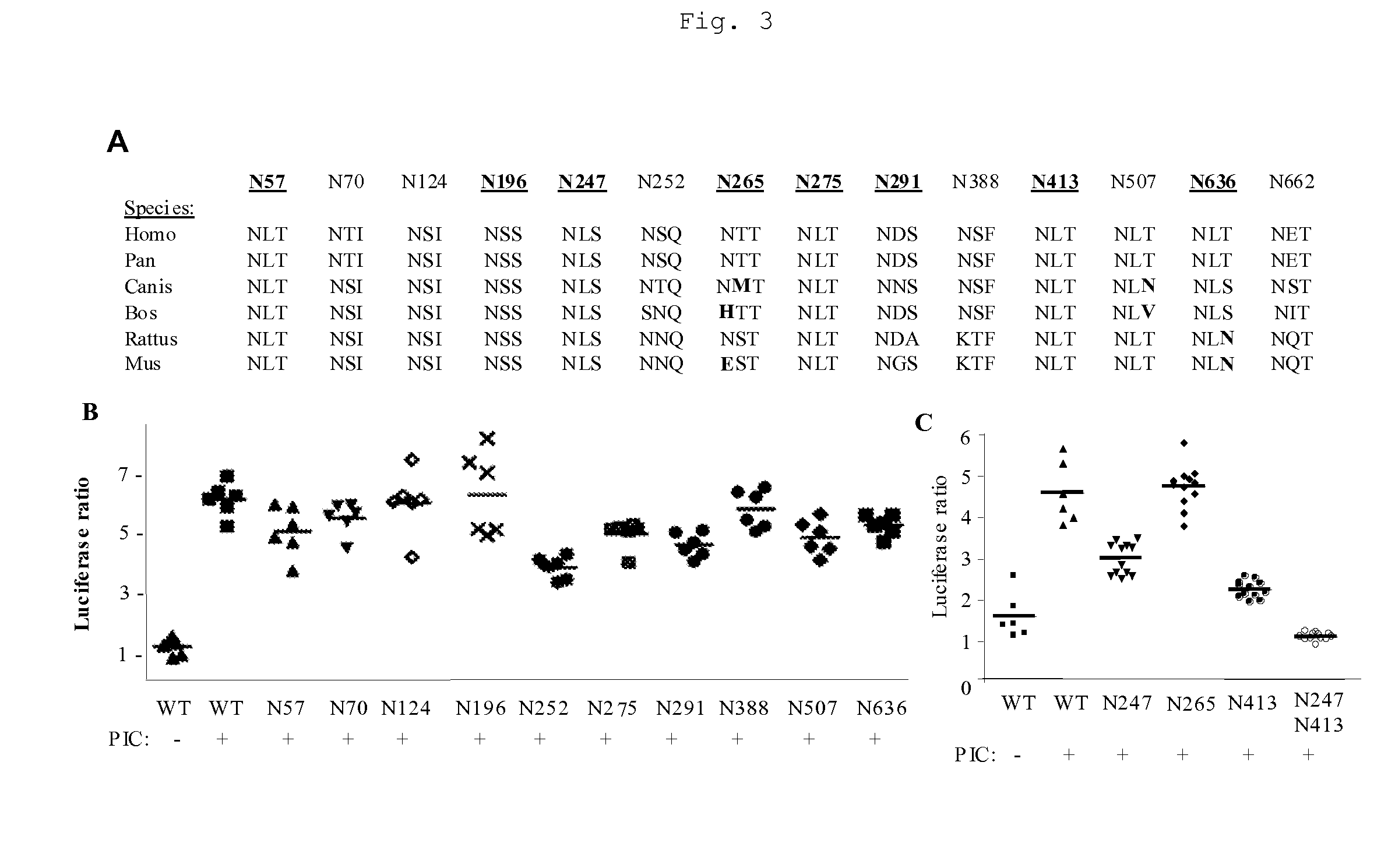TLR3 Glycosylation Site Muteins and Methods of Use
a glycosylation site and mutein technology, applied in the field of tlr3 glycosylation site muteins, can solve the problems of inflammatory conditions, pain, debilitating and lethal, and achieve the effect of modulating tlr3 activity and decreasing tlr3 glycosylation
- Summary
- Abstract
- Description
- Claims
- Application Information
AI Technical Summary
Benefits of technology
Problems solved by technology
Method used
Image
Examples
example 1
Glycosylation of hTLR3 Extracellular Domain
[0036] Mass spectroscopic analysis performed on the purified, soluble ECD of hTLR3 recombinantly expressed in Homo sapiens derived HEK293 cells (ATCC® number: CRL-1573™) revealed a high degree of charge heterogeneity among ionized hTLR3 ECD fragment species (FIG. 1A) and an average ion fragment mass of 110 kD. Treatment of recombinantly expressed hTLR3 ECD with a mixture of deglycosidases specific for O-linked and N-linked glycosylation followed by mass spectroscopic analysis revealed that deglycosidase treatment decreased the average ion fragment mass to 94 kD (FIG. 1B). Additionally, incubation of hTLR3 ECD with N-acetylneuraminic acid (NANAse), O-glycosidase DS, peptide N-Glycosidase F (PNGase F), or a cocktail containing all of these enzymes decreased glycoprotein specific staining of SDS-PAGE resolved hTLR3 ECD. Together these results indicate that the hTLR3 ECD is both N- and O-glycosylated.
[0037] hTLR3 ECD for mass spectroscopic an...
example 2
Effect of N-Glycosylation on Poly(I:C) Induced Activation of hTLR3 Signaling in Cells
[0041] In these experiments, TLR3 signaling was assayed using the pNF-κB-Luciferase (Stratagene, Inc., Carlsbad, Calif.) reporter gene construct transiently transfected by standard methods into HEK293 cells. This reporter construct comprised an NF-κB responsive DNA element linked to a luciferase reporter gene. Activation of TLR3 by poly(I:C) ligand increases NF-κB activity and results in activation of NF-κB responsive genes such as the luciferase reporter gene. HEK293 cells transfected with pNF-κB-Luciferase were transiently co-transfected with the control vector pHRL-TK constitutively producing a luciferase protein derived from Renilla. A cDNA encoding full-length hTLR3 was also transiently co-transfected, using standard methods, into HEK-293 cells transfected with the luciferase reporter gene.
[0042] After transfection, cells were treated with non-toxic doses of tunicamycin as shown in FIG. 2. Tu...
example 3
Effect of hTLR3 ECD N-Glycosylation Inhibition on Poly(I:C) Induced Activation of hTLR3 Signaling in Cells
[0044] Surprisingly, two potential N-glycosylation sites, N247 and N413, of the many possible sites within the hTLR3 sequence of SEQ ID NO: 2 were found to play a critical role in hTLR3 signaling (FIG. 3C). Additionally, two other potential N-glycosylation sites in SEQ ID NO: 2, N252 and N662, were also found to play an important role in hTLR signaling (FIG. 3B and FIG. 4). Positions N247, N252, N413, and N662 in SEQ ID NO: 2 are respectively equivalent to N221, N226, N387, and N636 of SEQ ID NO: 6.
[0045] The hTLR3 ECD has several potential N-linked glycosylation sites, based on the presence of the N-glycosylation motif Asn-X-Ser / Thr (FIG. 3A) in various TLR3 homologs. Only five of these potential N-linked glycosylation sites were conserved between Homo sapiens, Pan troglodytes, Canis familiaris, Bos taurus, Rattus norvegicus and Mus musculus TLR3 homologs (FIG. 3A) as assesse...
PUM
| Property | Measurement | Unit |
|---|---|---|
| Fraction | aaaaa | aaaaa |
| Concentration | aaaaa | aaaaa |
| Concentration | aaaaa | aaaaa |
Abstract
Description
Claims
Application Information
 Login to View More
Login to View More - R&D
- Intellectual Property
- Life Sciences
- Materials
- Tech Scout
- Unparalleled Data Quality
- Higher Quality Content
- 60% Fewer Hallucinations
Browse by: Latest US Patents, China's latest patents, Technical Efficacy Thesaurus, Application Domain, Technology Topic, Popular Technical Reports.
© 2025 PatSnap. All rights reserved.Legal|Privacy policy|Modern Slavery Act Transparency Statement|Sitemap|About US| Contact US: help@patsnap.com



